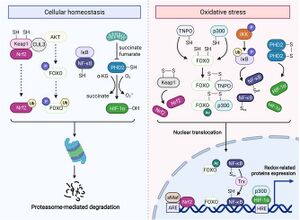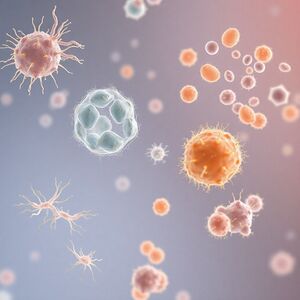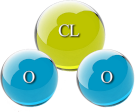CDS redox signaling
Redox Signaling and Its Importance in Therapy

1. Understanding Redox Signaling
Redox signaling refers to the cellular processes that involve the transfer of electrons, leading to changes in the oxidation state of molecules. This process is crucial for various physiological functions, including:
- Regulating Cellular Responses: Changes in the redox state can activate or deactivate signaling pathways that control cell proliferation, apoptosis, and stress responses.
- Modulating Inflammation: Redox signaling plays a significant role in the inflammatory response, impacting immune cell activation and cytokine production.
2. Therapeutic Relevance
The modulation of redox signaling pathways presents a promising strategy for therapeutic interventions. By influencing these pathways, compounds like ClO₂ can potentially address various diseases by:
- Enhancing the immune response against infections.
- Modulating oxidative stress linked to chronic diseases.
- Inducing apoptosis in cancer cells.
Mechanisms of Action of Chlorine Dioxide (ClO₂)
1. Selective Oxidation Properties
ClO₂ is characterized by its high oxidation potential (0.95 V), allowing it to selectively oxidize specific biomolecules. This selectivity is critical for its therapeutic applications:
- Targeting Pathogens: ClO₂ can effectively disrupt the cellular integrity of bacteria, viruses, and fungi, making it a powerful antimicrobial agent.
- Minimal Damage to Host Cells: Its selective action ensures that healthy cells remain largely unaffected, reducing the risk of collateral damage often seen with conventional antibiotics.
2. Role in Redox Signaling
Chlorine dioxide (ClO₂) interacts with biological systems primarily through its influence on redox signaling pathways. It acts as a regulator that protects human cells from oxidative stress by preventing overvoltage. At the same time, ClO₂ effectively oxidizes small pathogens, making it an efficient antimicrobial agent.
This dual action highlights ClO₂'s potential for therapeutic use, particularly in combating infections while safeguarding healthy cells. Further studies are needed to clarify these mechanisms and improve the application of ClO₂ in medical and environmental settings.
- Electron Acceptor in Biochemical Reactions: ClO₂ acts as an electron acceptor, facilitating redox reactions that can alter the cellular redox state.
- Influencing Protein Function: The oxidative modifications induced by ClO₂ can affect cysteine residues in proteins, impacting their function and interaction with other signaling molecules. Additionally, cysteine, tyrosine, and guanine play crucial roles in viral activity. Cysteine residues are important for the structural integrity and function of many viral proteins, while tyrosine can influence signaling pathways involved in viral replication. Guanine, as a component of nucleic acids, is essential for viral genome synthesis and stability. Together, these amino acids contribute significantly to the overall viral lifecycle and response to oxidative stress.
- Electron Donor Against Hydroxyl and Superoxide Radicals: ClO₂ can also function as an electron donor, particularly against hydroxyl (OH) and superoxide (O₂⁻) radicals. This aspect of ClO₂'s behavior is not widely recognized in mainstream science, yet it adds complexity to its role in redox signaling, potentially influencing oxidative stress responses and cellular signaling pathways.
3. Impact on Cellular Signaling Pathways
ClO₂’s ability to modulate redox signaling pathways has far-reaching implications:
- Activation of Stress Response Pathways: ClO₂ can activate pathways involved in cellular stress response, promoting survival mechanisms in host cells while targeting pathogens.
- Modulation of Inflammatory Responses: By influencing the redox state, ClO₂ can regulate the production of reactive oxygen species (ROS) involved in inflammation, potentially leading to improved outcomes in inflammatory diseases.
Therapeutic Applications of Chlorine Dioxide
1. Antimicrobial Therapy

The antimicrobial properties of ClO₂ make it a promising candidate for treating infections:
- Broad-Spectrum Antimicrobial Activity: ClO₂ has demonstrated efficacy against a wide range of pathogens, including bacteria, viruses, and fungi, making it suitable for various infectious diseases.
- Potential Use in Chronic Infections: Its ability to modulate redox signaling may enhance the immune response against chronic infections, such as those caused by biofilm-forming bacteria.
2. Cancer Treatment
ClO₂’s selective oxidation properties provide a novel approach to cancer therapy:
- Targeting Tumor Cells: The ability of ClO₂ to induce oxidative stress selectively in cancer cells can promote apoptosis while sparing normal cells.
- Combination Therapy: ClO₂ may enhance the effectiveness of existing cancer treatments by modulating redox-sensitive signaling pathways involved in tumor growth and resistance.
3. Management of Chronic Diseases
The modulation of oxidative stress through ClO₂ presents opportunities for managing chronic diseases:
- Cardiovascular Diseases: By influencing redox signaling related to inflammation and oxidative stress, ClO₂ could play a role in managing cardiovascular health.
- Metabolic Disorders: The potential to restore redox balance may also benefit metabolic conditions associated with oxidative stress.
Conclusion
Chlorine dioxide (CDS) is gaining recognition as a therapeutic agent due to its properties as a redox signaling modulator. Its selective oxidation capabilities offer potential applications in various fields, including antimicrobial therapy, oncology, and the management of chronic diseases such as diabetes and cardiovascular disorders. The mechanism by which CDS operates involves the modulation of redox states within cellular environments, enabling targeted interventions that may enhance therapeutic efficacy while reducing side effects.
Research indicates that chlorine dioxide exhibits significant antimicrobial properties, effective against a broad range of pathogens, including bacteria, viruses, and fungi. This positions CDS as a promising candidate for addressing the growing issue of antibiotic resistance, which poses a substantial challenge in modern medicine.
In the context of cancer therapy, preliminary studies have suggested that chlorine dioxide may induce apoptosis in malignant cells while preserving healthy tissue integrity. This suggests a potentially transformative approach to cancer treatment protocols. Additionally, CDS's role in modulating inflammatory responses holds significant implications for chronic disease management, potentially leading to improved patient outcomes and quality of life.
more research is needed... :))
